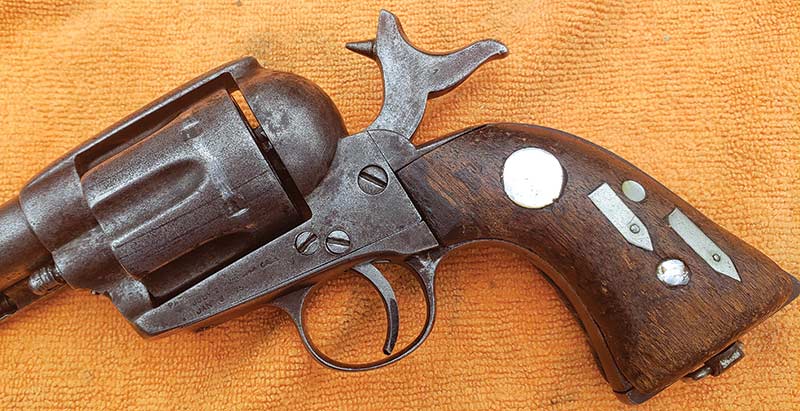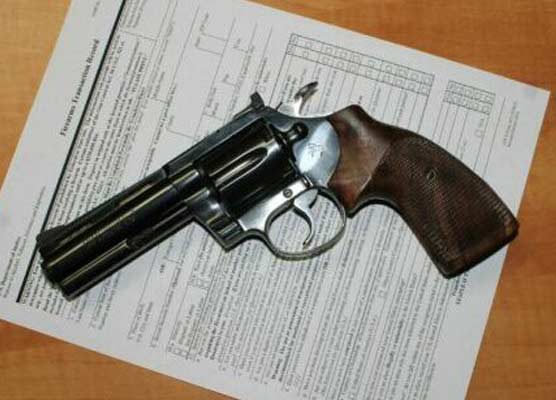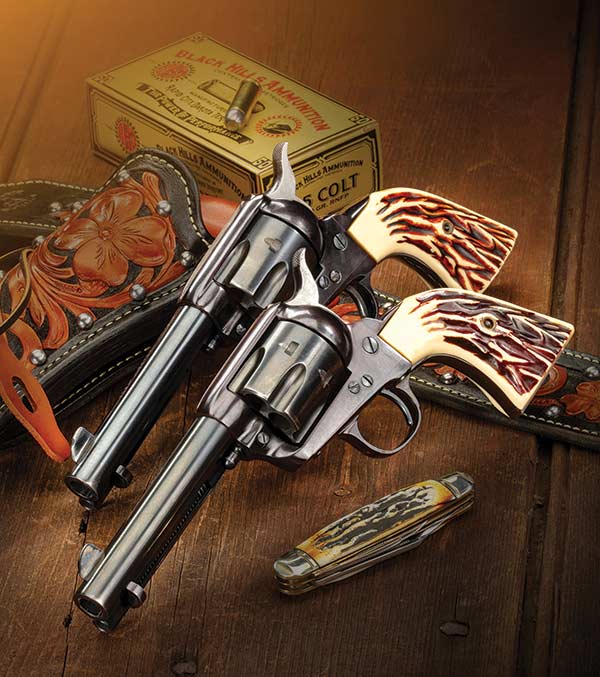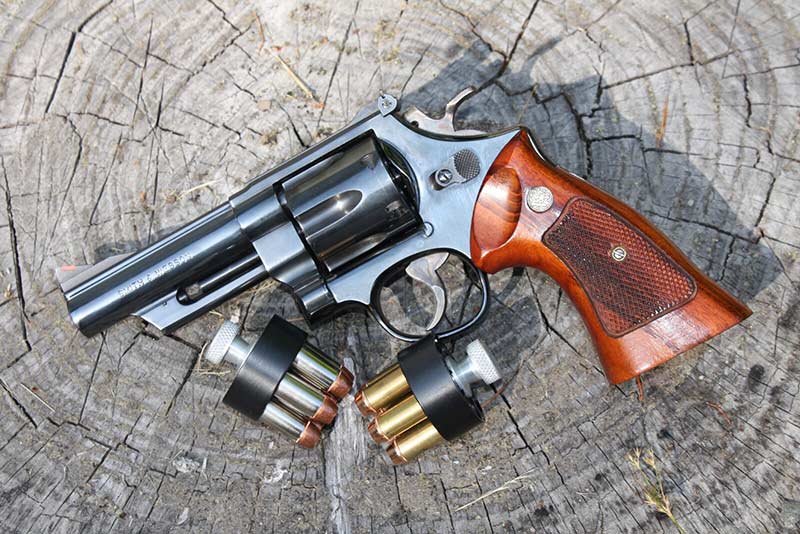Colt Counterfeit
Spanish Revolvers Fooling Buyers For A Century
“It’s not a real Colt,” — words no collector wants to hear, yet it happens more frequently than one might think.
To be clear, Samuel Colt did authorize European gunmakers to make copies of his products as long as they paid a royalty. Most came from Belgium and were roll-stamped COLT BREVETE, which translates to “patented by COLT,” but the company did not authorize many copies even when marked as such!
The topic of Brevete Colts is a tangled web we will not explore here. Our subject will be what is commonly called an Eibar, Spanish, or Mexican “Colt.”
“Offshoring” Isn’t New
The problem stems from a group of firearms makers in the Spanish town of Eibar over a century ago. Eibar is an industrial city in a winding valley near the French border. It has been recognized as a leading center for the manufacturing of firearms since the time of Columbus. To many, it is known as the Gunsmith City of Spain.
In the late 1800s and early 1900s, many shops produced close copies of many popular American handguns for export, and many ended up in Mexico. Some companies were proud of their work and roll-stamped their branding on the barrel. Others used the ignorance of their buyers against them. Everyone knew the Colt name but not everyone knew how to spell it or what a genuine Colt looked like. This holds true even today.
At the time, the Colt Single Action Army (SAA), aka the “Peacemaker,” was well known and respected for quality, durability and reliability so many Eibar shops made their own versions, many of dubious quality. Copying the popular Colt SAA was a slam dunk for increased sales and profit.
Many small shops made firearms at the time, but a few stand out in the records. Historian Juan L. Calvó wrote that Mexican arms dealers Felipe and Jose Quintana Arias were the principal buyers of firearms from the four major companies in Eibar. They were: Orbea Hermanos; Anitua y Charola (1881-98); Vicente Arizmendi (1881-94) and Larrañaga, Garate y Ca (1884-91) superseded in 1892 by Garate, Anitua y Ca.
The market for guns was running wild in Mexico at the time. In 1892, the Quintana Brothers purchased some 2,000 revolvers per month. Calvó goes on to say the brothers decided they could increase their profits if they built the Hermanos Quintana factory in Eibar in 1895. Due to labor issues, the factory was in production for less than a decade.
Today
Most Eibar revolvers I have seen are in low or relic condition, and the markings are obscured. Others were nickeled or engraved, destroying the roll stamps. I suspect this was often done to deceive the buyer. But, when found in legible condition, some guns will have the Eibar maker on the barrel top, such as FÁBRICA DE ORBEA HERMANOS, EIBAR, and QUINTANA HERMANOS IMPORTADORES PARA MEXICO on the side, which shows the gun was manufactured by Orbea Hermanos and imported into Mexico by the Quintana Brothers.
Other Eibar gunmakers did not make their markings as clear. To trick unsuspecting buyers, the maker often stamped something like “Made For COLT’S Cartridges” or “COLT’S CARTRIDGES FIT BEST.” The exact wording didn’t matter as long as the name COLT stood out and made the buyer think it was the genuine article. One maker went so far as to roll-mark the barrel “COL’S PT-FA MFG Co HARTFORD CT U.S.A,” dropping the T in COLT. It was a ruse still fooling collectors today.
To make matters even more confusing, many of these guns have been repaired over the last century using Colt parts. A repaired Eibar gun may have a Colt barrel, grips or some other part to mislead identification efforts. Even more devious individuals have used the inexpensive Eibar frames to produce what appears to be late 1800 Colt revolvers. They stamp spurious serial numbers and patent dates while adding genuine Colt parts to make a gun which, if honest, would be worth thousands to tens of thousands of dollars. It takes close inspection and comparison to flush out the fake.
So, how can we winnow the wheat from the chaff? To paraphrase the GI Joe cartoon catchphrase, knowing is half the battle! There are features on the guns that are hard to camouflage.
True Detective
The easily detected features of Eibar Colts are the use of a lanyard loop, a notched frame and the lack of a pinned recoil plate.
In my experience, most European handguns feature a lanyard loop at the bottom of the grip frame. If you think back to the gun Tuco carried in The Good, The Bad and The Ugly, you will remember he had it on a lanyard around his neck, which should be expected from a movie made in Spain! Even if the lanyard loop is gone, there is a hole, or a screw.
The Colt SAA trigger assembly is housed inside the frame, which is defined by a straight line from front to back. Many Eibar Colts feature a separate trigger housing fitting in a notch in the frame. If you see a notch, it’s not an authentic Colt. More subtle differences take an experienced eye to detect.
One clue is the transition of the top strap of the frame as it arches down to the barrel. An authentic Colt has a rolled transition. The Eibar version doesn’t feature the roll. See photos on previous page.
Another clue is the poor overall machining. A genuine Colt shows quality on every surface. Unless molested by a past owner or Bubba gunsmith, the edges are sharp, the angles square and the surfaces smooth. In comparison, Spanish copies are often roughly machined, screw holes are off-center, and generally appear of poor quality. Sometimes, the barrel is crooked and not aligned with the frame and cylinder!
Depending on the maker, the loading gate may lack material or be of a different style altogether.
If you have ever traveled to Europe, you may have noticed the stylistic differences in how numbers are made. This holds true for the serial number of the guns from Spain. Colt had serial number stamps with a specific font and size. The Eibar revolvers usually have a font following the European style of making numbers and Colt never did hand scribe a serial number on their guns!
Other differences include heavily tapered barrels, a squared-off ejector housing, the wrong profile of the trigger, a thin top strap, the wrong angle of the cylinder pin retaining screw and the wrong cylinder pin profile. Colt never stamped the caliber on the frame of the Colt SAA. The caliber was on the barrel, the trigger bow or both.
As stated before, many Eibar revolvers have led a rough life and are often in a hazardous state of repair. I have seen damage to Eibar revolvers that can’t be explained with everyday use. It seems to indicate poor steel was used in its manufacture so carefully inspect any revolver before shooting.
In some cases, the revolver was enhanced for a wealthy or influential owner, showing signs of gold wash, mediocre engraving and even metal grips. There are beautiful and exceptional Eibar revolvers, but they are rare on the open market.
Not long ago, a collector I knew purchased what appeared to be an early Colt Single Action Army, but certain things didn’t pass the sniff test. The markings looked correct, and the serial number looked proper, but some structural details were wrong. Under closer inspection, it was decided it was an Eibar “Colt” someone had gone to great lengths to disguise as a highly collectible five-figure Colt. It was quickly returned for a refund!
Vigilance Is Eternal
A collector’s best defense is to study the genuine article, learning the curves and profiles of the parts and how they match. Yes, the Colt S.A.A. has undergone subtle changes since it was introduced in 1873, but the profile and quality of a First Generation Colt never changed. John Kopec’s bible, A Study of the Colt Single Action Revolver, is well worth the cost of education. Spending money on a book is better than wasting money on a fake Colt.
This is not limited to just the Colt Peacemaker. The craftsmen of Eibar also made their versions of the Colt 1877 (Lightning), the Colt M1878, and other later versions. They also copied many different U.S. designs including Smith & Wesson and Merwin & Hulbert. Interestingly enough, they also made double-action revolvers resembling the Colt Peacemaker in an attempt to blend the old with the new.
Do Eibar revolvers have the same collector value as a Colt? In my experience, if an Eibar revolver is in the same condition as an authentic Colt, the Colt will command more interest and a higher price, usually much higher. But as long as they were honestly identified as a Colt copy, they are an exciting piece to any Old West collection.
Get more revolver content every week!
Sign up to receive the Wheelgun Wednesday newsletter.
By submitting this form, you are consenting to receive marketing emails from: . You can revoke your consent to receive emails at any time by using the SafeUnsubscribe® link, found at the bottom of every email. Emails are serviced by Constant Contact












